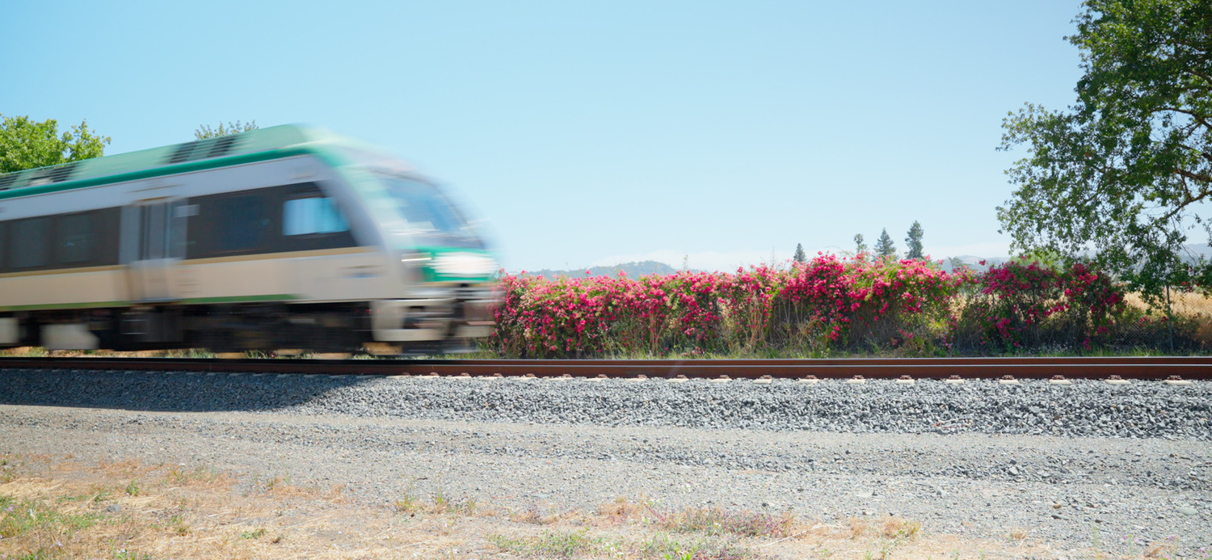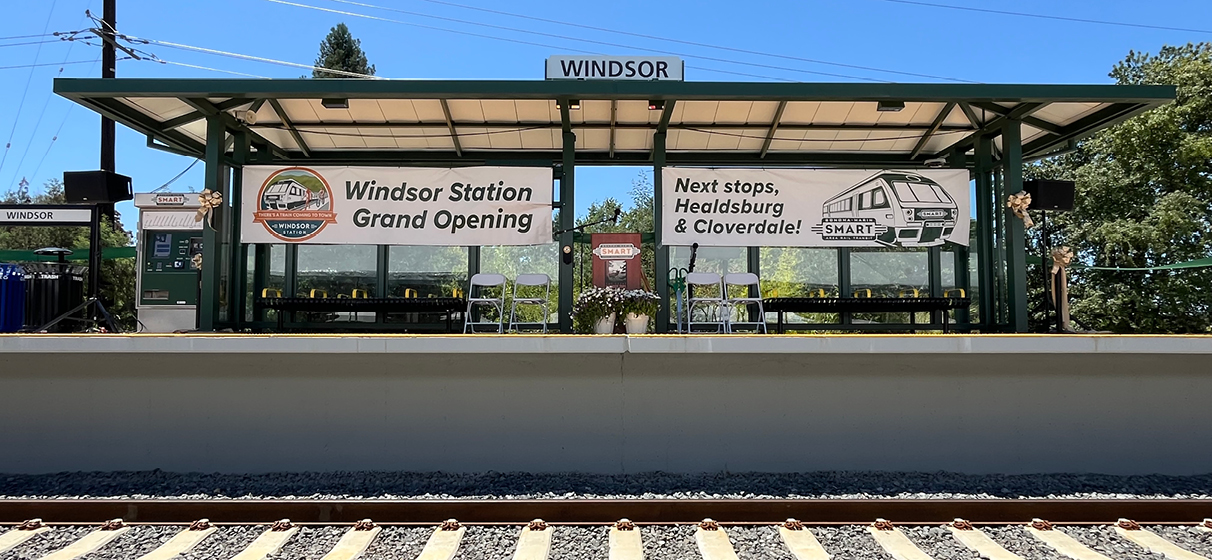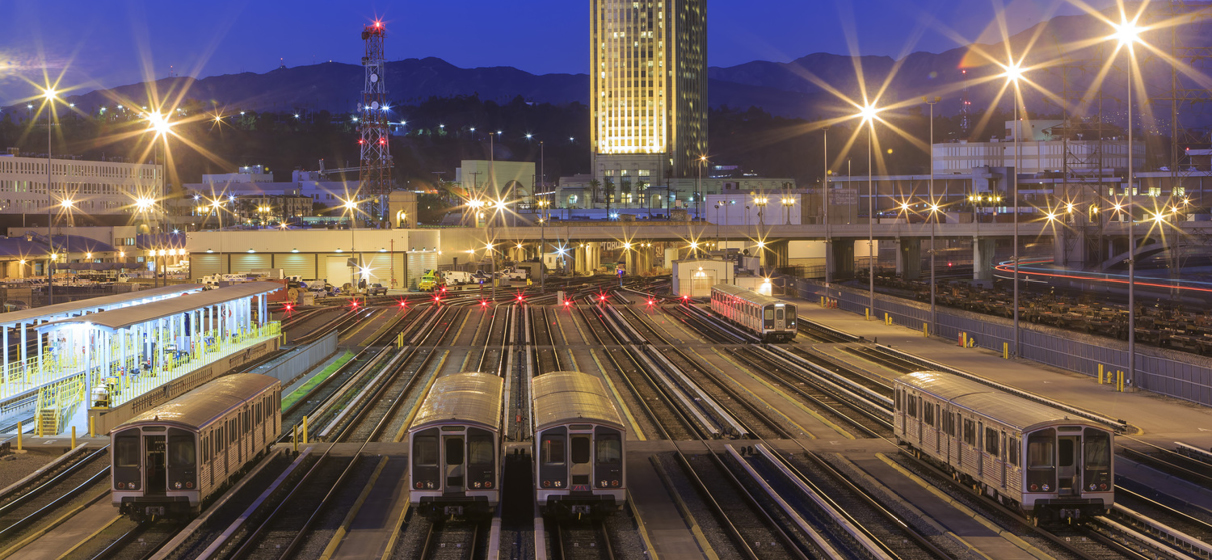In California’s North Bay, the Sonoma-Marin Area Rail Transit (SMART) system is transforming how residents and visitors move through one of the Bay Area’s most dynamic and rapidly growing regions. Designed to connect communities across Sonoma and Marin counties, SMART has evolved into a model for modern regional transit infrastructure.
Established as a public transit district in 2002, SMART envisioned a plan to repurpose 70 miles of former freight rail right-of-way into a passenger rail corridor with integrated bicycle and pedestrian infrastructure. Today, the system offers 48 miles of active commuter rail service between Larkspur and Windsor, California, with long-term plans to extend the corridor to Cloverdale. Running parallel to the busy U.S. 101 corridor, SMART provides all-day, accessible rail service while enhancing mobility for a region historically underserved by public transit.
With ADA-compliant stations, seamless integration with Clipper fare payment, onboard bike storage and a growing parallel pathway for active transportation, the system supports both daily commuting and tourism. It also serves as a catalyst for transit-oriented development, helping to support tourism and local economies along its route.
A Vision for Sustainable Regional Transit
SMART’s development has been marked by the agency vision of converting a dormant 70-mile freight rail corridor into a modern passenger rail system with a dedicated bicycle and pedestrian path. By 2017, SMART had launched its initial 43-mile segment, connecting downtown San Rafael with Santa Rosa, including key stops along the Highway 101 corridor. In the summer of 2025, it celebrated the opening of its Windsor extension, which represents 80 percent completion of the entire planned alignment. As the system continues to grow, SMART is also accommodating active transportation elements by creating a bicycle and pedestrian pathway that will eventually become part of the 307-mile Great Redwood Trail.
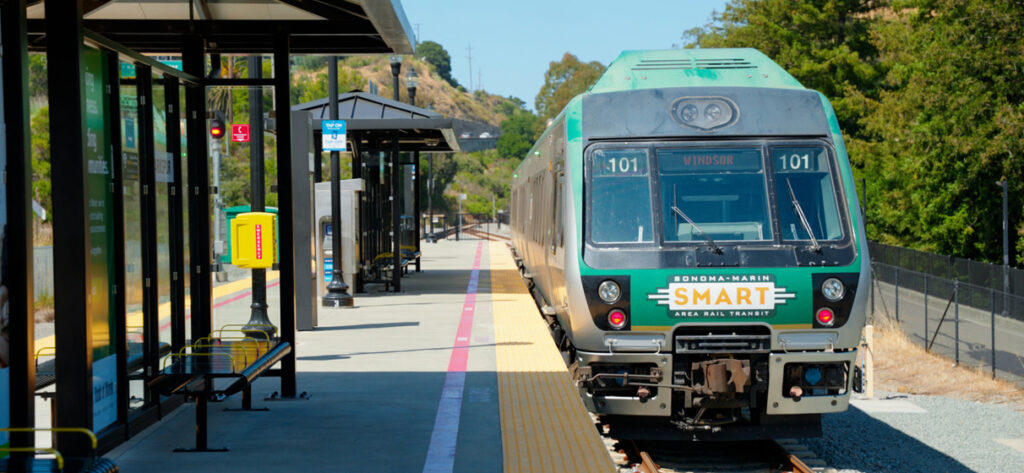
Beyond mobility, SMART reflects a deeper commitment to environmental and economic sustainability. It supports regional land use goals, reduces greenhouse gas emissions, and encourages transit-oriented development in walkable communities across the North Bay.
STV’s Enduring Role in System Development
Since SMART’s inception, STV has been a trusted engineering and design partner helping to shape the system at every stage. As lead designer for the initial operating segment, STV worked alongside contractors and the SMART District to deliver the core infrastructure that made the system’s launch possible.
“STV has been responsible for most of the design of the SMART system to date for the railroad and civil and track side as well as all the stations,” said Andy Sokol, vice president and the project’s lead engineer at STV. “STV has designed 45 of the approximately 48 miles of track that SMART operates currently, including more than 30 bridges, 90 grade crossing upgrades, station infrastructure, as well as 15 of the 32 miles of the bike path that runs alongside the track.”
An early phase included the reconstruction of shared passenger and freight track, design and layout of eight initial stations and replacement or retrofit of dozens of bridges and at-grade crossings. STV led the design of complex systems for track alignment, civil grading, drainage, site planning and station architecture—balancing modern code requirements with legacy infrastructure.
STV’s technical leadership also facilitated innovative solutions along the corridor, including gauntlet tracks to safely accommodate freight train clearance through stations. On the Upper Petaluma River, STV helped deliver a 211-foot bridge installation in just 10 days, minimizing service disruption while meeting stringent structural and environmental standards.
STV also helped usher in the latest SMART milestone – the opening of a 3.2-mile Windsor extension. STV played a central role in this expansion, leading the design of track infrastructure, the Windsor Station and a 2.6-mile segment of the SMART pathway. The project also encompassed the reconstruction of five rail bridges, two pedestrian bridges and one pedestrian underpass, upgrades to five at-grade crossings and the integration of site-specific drainage, lighting and ADA features – all delivered with STV’s multidisciplinary expertise.
In downtown Windsor, the new station is already anchoring the community’s vision for growth and livability. Located within walking distance of local businesses, schools, parks, and civic amenities, the station provides seamless access for everyday commuters and visitors alike. STV’s integrated site planning and station design helped shape the area into a welcoming, multimodal hub that reflects both the charm and ambitions of Windsor.
“This station sits right in the core of downtown Windsor, a beautiful, quaint little town. It’s going to be great for everyday riders and for tourism too,” Sokol said.
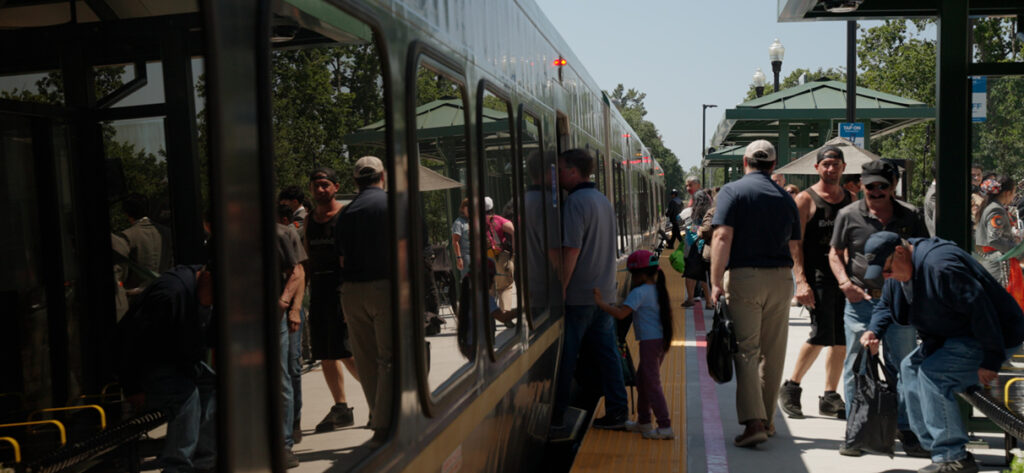
Looking Ahead: Building Toward Cloverdale
The Windsor extension is just the latest step in SMART’s long-range expansion plan. The next station is already in the works to connect to Healdsburg, CA, with service projected to begin by 2028. Meanwhile, SMART continues to develop its non-motorized pathway, helping to complete a seamless north-south multimodal corridor through the heart of the North Bay. With each phase, SMART demonstrates that commuter rail in smaller metro regions can be not only viable, but vital.
“SMART is of the best transportation agencies to work with,” Sokol said. “They’re very active and progressive towards building and getting things done quicky and efficiently. It’s truly impressive what SMART’s done.”
STV’s Commitment to Regional Impact
STV’s ongoing partnership with SMART reflects the firm’s commitment to delivering resilient, multimodal infrastructure that meets the evolving needs of communities. By integrating rail, civil, structural and architectural services under one roof, STV strives for each phase of work to support the system’s long-term goals for safety, accessibility and environmental performance.
